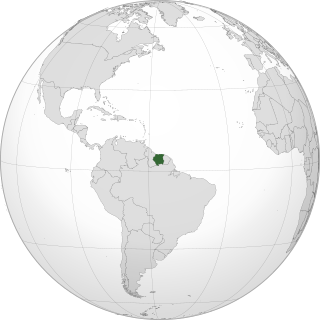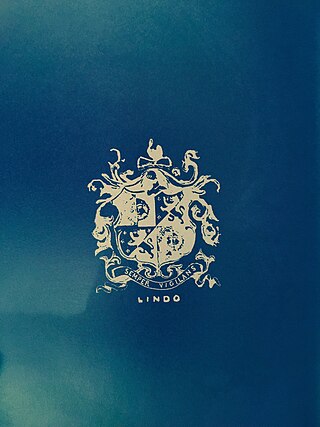
The Touro Synagogue or Congregation Jeshuat Israel is a synagogue built in 1763 in Newport, Rhode Island. It is the oldest synagogue building still standing in the United States, the only surviving synagogue building in the U.S. dating to the colonial era, and the oldest surviving Jewish synagogue building in North America. In 1946, it was declared a National Historic Site.
African-American Jews are people who are both African American and Jewish. African-American Jews may be either Jewish from birth or converts to Judaism. Many African-American Jews are of mixed heritage, having both non-Jewish African-American and non-Black Jewish ancestors. Many African-American Jews identify as Jews of color, but some do not. Black Jews from Africa, such as the Beta Israel from Ethiopia, may or may not identify as African-American Jews.
Spanish and Portuguese Jews, also called Western Sephardim, Iberian Jews, or Peninsular Jews, are a distinctive sub-group of Sephardic Jews who are largely descended from Jews who lived as New Christians in the Iberian Peninsula during the few centuries following the forced expulsion of unconverted Jews from Spain in 1492 and from Portugal in 1497. They should therefore be distinguished both from the descendants of those expelled in 1492 and from the present-day Jewish communities of Spain and Portugal.

Bevis Marks Synagogue, officially Qahal Kadosh Sha'ar ha-Shamayim, is an Orthodox Jewish congregation and synagogue, located off Bevis Marks, Aldgate, in the City of London, England, in the United Kingdom. The congregation is affiliated to London's historic Spanish and Portuguese Jewish community and worships in the Sephardic rite.
The history of Jews in Charleston, South Carolina, was related to the 1669 charter of the Carolina Colony, drawn up by the 1st Earl of Shaftesbury and his secretary John Locke, which granted liberty of conscience to all settlers, and expressly noted "Jews, heathens, and dissenters". Sephardi Jews from London were among the early settlers in the city and colony, and comprised most of its Jewish community into the early 1800s.

Isaac Aboab da Fonseca was a rabbi, scholar, kabbalist, and religious writer. In 1656, he was one of several elders within the Portuguese-Jewish community in Amsterdam and for a time in Dutch Brazil before the Portuguese reconquest. He was one of the religious leaders who excommunicated philosopher Baruch Spinoza in 1656.

Kahal Zur Israel was a Jewish synagogue located at Rua do Bom Jesus number 197 in Recife, Brazil. It was established in 1636 by Portuguese and Spanish Sephardic Jews that had taken refuge in Dutch Brazil fleeing forced conversion and were joined by New Christians, who possibly helped to build the structure and were already living in the colony. It was the first synagogue erected in the Americas. The building is now a museum, featuring a Torah and bema as well as archeological excavations displaying various parts of the original synagogue, such as the mikveh.
A Jewish population has been in Barbados almost continually since 1654.

Aaron Lopez (1731–1782), born Duarte Lopez, was a merchant, slave trader, and philanthropist in colonial Rhode Island. Through his varied commercial ventures, he became the wealthiest person in Newport, Rhode Island. In 1761 and 1762, Lopez unsuccessfully sued the Rhode Island colonial government for citizenship.

Temple Beth Elohim is a Reform Jewish synagogue located at 230 Screven Street in Georgetown, South Carolina, in the United States.

Sir Moses Haim Montefiore, 1st Baronet, was a British financier and banker, activist, philanthropist and Sheriff of London. Born to an Italian Sephardic Jewish family based in London, after he achieved success, he donated large sums of money to promote industry, business, economic development, education and health among the Jewish community in the Levant. He founded Mishkenot Sha'ananim in 1860, the first Jewish settlement outside the Old City of Jerusalem.

The history of the Jews in Suriname starts in 1639, as the English government allowed Spanish and Portuguese Jews from the Netherlands, Portugal and Italy to settle the region, coming to the old capital Torarica.

Bilhah Abigail Levy Franks was an English–born Ashkenazi Jewish woman who lived most of her life in the Province of New York, British America. Born in London and raised in New York City, she married a London-born merchant and reared a family of nine children. While committed to Jewish observance, she and her family also socialized freely in the wider Christian society. Theirs was considered one of the prominent families of colonial New York.
Emanuel Lousada was a British merchant, planter and politician with interests in Jamaica and Barbados. He was the High Sheriff of Devon from 1842 until 1843, making him the first Jew to hold the title in a county outside of the Sheriff of London, which had been held first by David Salomons in 1835. Lousada was associated with Peak House, Sidmouth. Lousada owned more than 400 African slaves on his sugarcane plantations in the British West Indies at the time of the Slavery Abolition Act 1833. He died a wealthy man, leaving £100,000 in his will.
Black Jews in New York City comprise one of the largest communities of Black Jews in the United States. Black Jews have lived in New York City since colonial times, with organized Black-Jewish and Black Hebrew Israelite communities emerging during the early 20th century. Black Jewish and Black Hebrew Israelite communities have historically been centered in Harlem, Brooklyn, The Bronx, and Queens. The Commandment Keepers movement originated in Harlem, while the Black Orthodox Jewish community is centered in Brooklyn. New York City is home to four historically Black synagogues with roots in the Black Hebrew Israelite community. A small Beta Israel (Ethiopian-Jewish) community also exists in New York City, many of whom emigrated from Israel. Black Hebrew Israelites are not considered Jewish by the New York Board of Rabbis, an organization representing mainstream Rabbinic Judaism. However, some Black Hebrew Israelite individuals in New York City are recognized as Jewish due to converting through the Orthodox, Conservative, or other Jewish movements.
Racism in Jewish communities is a source of concern for people of color, particularly for Jews of color. Black Jews, Indigenous Jews, and other Jews of color report that they experience racism from white Jews in many countries, including the United States, Canada, the United Kingdom, France, Kenya, South Africa, and New Zealand. Sephardi and Mizrahi Jews also report experiences with racism by Ashkenazi Jews. The centering of Ashkenazi Jews is sometimes known as Ashkenormativity. In historically white-dominated countries with a legacy of anti-Black racism, such as the United States and South Africa, racism within the Jewish community often manifests itself as anti-Blackness. In Israel, racism among Israeli Jews often manifests itself as discrimination and prejudice against Sephardi and Mizrahi Jews, Ethiopian Jews, African immigrants, and Palestinians. Controversially, some critics describe Zionism as racist or settler colonial in nature.
Billy Simmons was an African-American Jew from Charleston, South Carolina, one of the few documented Black Jews living in the Antebellum South. Simmons was a scholar in both Hebrew and Arabic.
Lucy Marks was an African-American Jew from Philadelphia, one of the few documented Black Jews during early American history. An active member of Congregation Mikveh Israel, she is buried in Mikveh Israel Cemetery.

The Lindo family was a Sephardic Jewish merchant and banking family, which rose to prominence in medieval Spain.
Isaac Lopez Brandon was an African-American Jew, one of the earliest recorded Jews of African descent in American history. Born in Barbados, he and his sister Sarah Brandon Moses went on to become part of the Sephardic upper class in New York City. Portraits of him and his sister are the earliest known paintings of Jews of African descent in North American history. In Barbados, Brandon fought for the equal civil rights of the Jewish minority.










